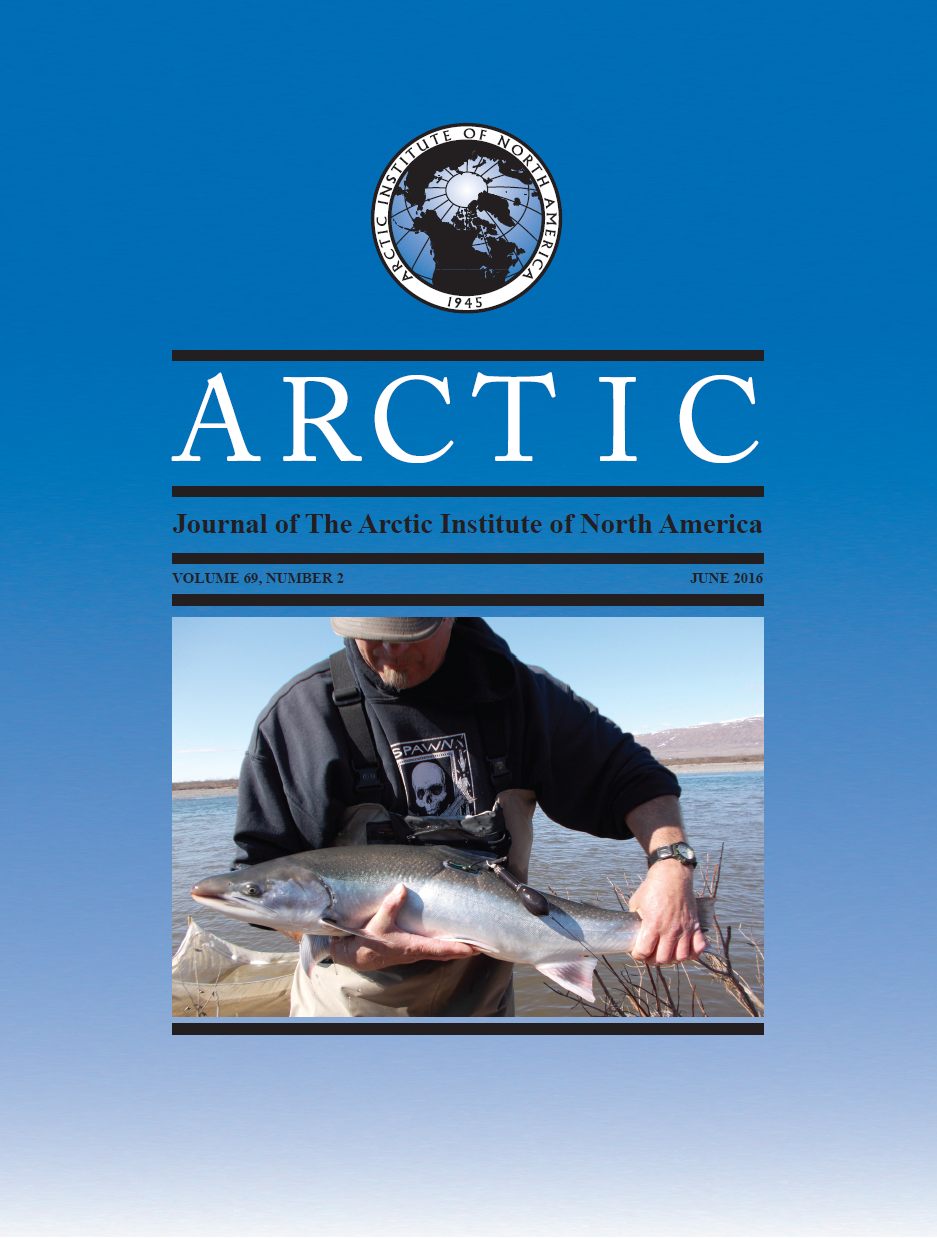Utility of Pop-Up Satellite Archival Tags to Study the Summer Dispersal and Habitat Occupancy of Dolly Varden in Arctic Alaska
DOI:
https://doi.org/10.14430/arctic4561Keywords:
Chukchi Sea, dispersal, Dolly Varden, PSATsAbstract
In Arctic Alaska, Dolly Varden Salvelinus malma is highly valued as a subsistence fish; however, little is known about its marine ecology. New advances in electronic tagging, such as pop-up satellite archival tags (PSATs), provide scientists with a fishery-independent means of studying several aspects of this species’ movement and ecology. To evaluate the usefulness of this technology, we attached 52 PSATs to Dolly Varden in the Wulik River, which flows from northwestern Alaska into the Chukchi Sea, to study several characteristics of the marine habits of this species. Overall, PSATs provided unprecedented information about summer dispersal of Dolly Varden, including the first evidence of offshore dispersal in the Chukchi Sea, as well as previously documented dispersal types such as movement to other rivers and southerly nearshore movements in northwestern Alaska. On the basis of minimal observable evidence of tag-induced behavioral effects, as well as movements of more than 450 km by fish at liberty (i.e., between tag deployment and release or recapture), we conclude that PSATs offer an effective alternative method for studying several aspects of Dolly Varden dispersal and ecology in areas where it is not practical or feasible to capture these fish, such as coastal and offshore regions of Arctic Alaska


